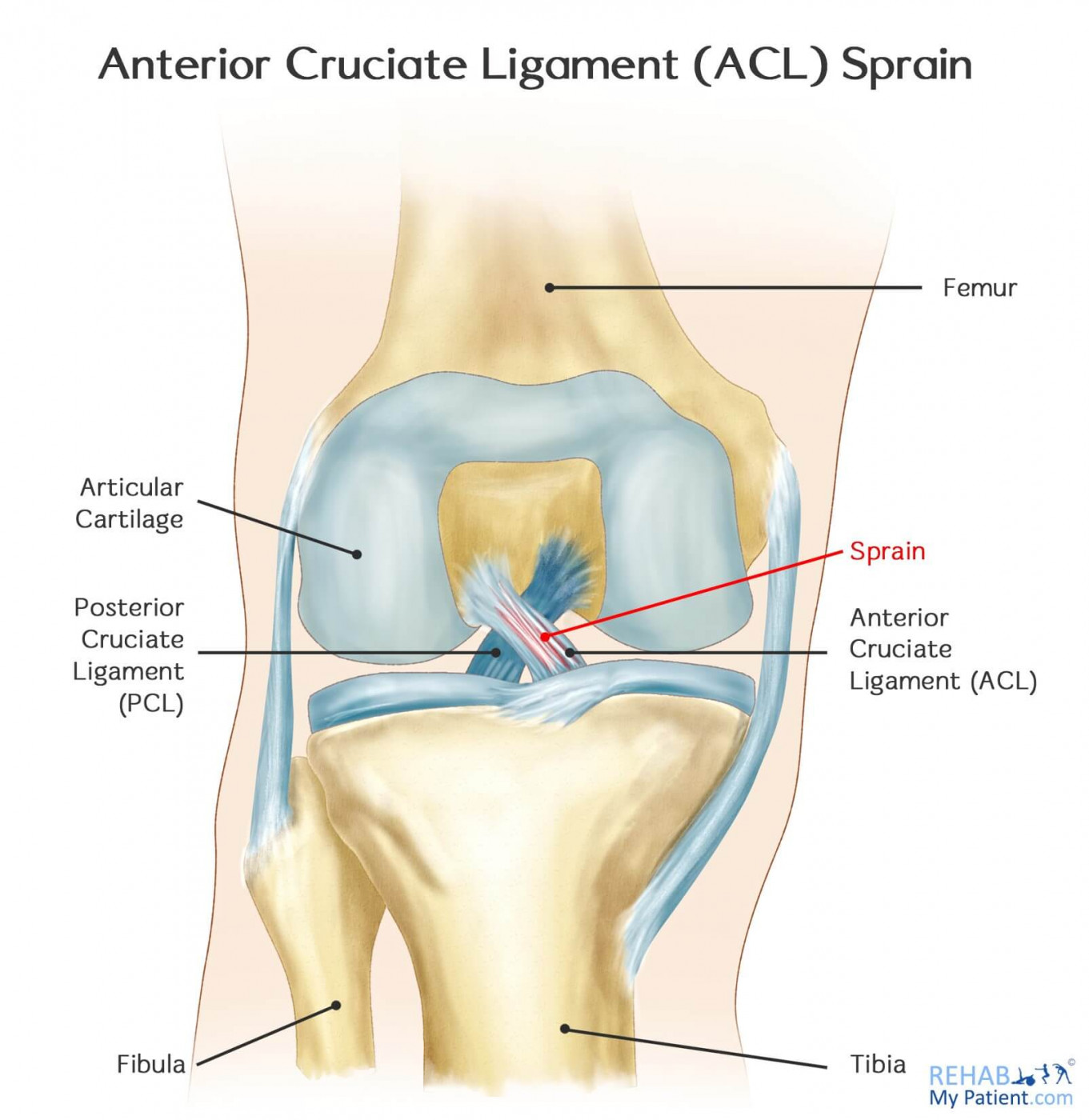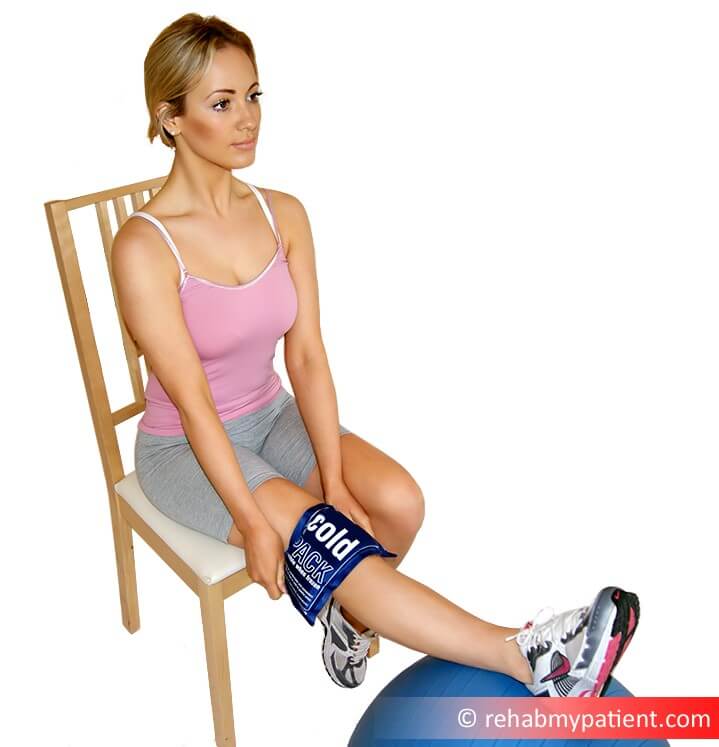
The knee ACL (anterior cruciate ligament) can become injured when the knee joint is bent backwards, twisted or bent to one side or another. Injury chances are higher when one or more of these movements occurs simultaneously. Contact during sports has also been shown to be one of the biggest causes an ACL injury. This type of injury will often occur when playing sports. It can happen when the foot is planted firmly on the ground and a sudden force hits the knee while the leg is slightly bent or straight. It can occur when changing directions quickly, slowing when running or landing when jumping. It tends to be common in football, soccer, skiing and other sports where a lot of weaving, jumping, starting and stopping occur.
The ACL can sprain mildly (Grade I), moderately (Grade II), and severely (Grade III rupture). In reality, even a Grade I sprain is very painful and can cause significant swelling and disability. Knee ACL sprains are complicated injuries and they can take weeks to months to repair.
Anterior Cruciate Ligament Injury Anatomy
An anterior cruciate ligament injury is a tear in one of your knee ligaments joining the upper leg bone with the lower leg bone. This ligament works to stabilize the knee. Injuries can range from mild, such as small tears, or severe when the ligament ends up tearing completely or when the ligament and a portion of the bone separate from the remainder of the bone.

Without proper treatment, the injured ligament is unable to control movement of the knee. The bones end up being more likely to end up rubbing against each other. Abnormal movement can also cause damage to the tissue covering the bone ends and trap or tear the pads cushioning the knee joints. In the end, the damage can lead to osteoarthritis.
At times, other knee ligaments or components of the knee can become injured. This can include cartilage, or bones in the knee, which could be broken.
A sprain or tear to the ACL is likely to be very painful. Your knee will start swelling within minutes, and you will be unlikely to walk comfortable (if at all, depending on the severity of the tear). Your knee will feel very stiff and you will be unable to fully bend or straighten it.
On seeing your therapist, if they suspect an ACL tear, they might refer you for an MRI scan. If the ACL is ruptured, you may be advised to opt for surgery.
How to Treat an Anterior Cruciate Ligament Injury:
- Ice
Apply ice to the injured site for 5 to 10 minutes at a time three to five times per day. In doing so, you can help to reduce the amount of swelling involved.

- Elevation
Elevate the leg by propping it on something that lifts the leg to above heart level. In the beginning, you want to refrain from moving your leg as much as you can, but rather, focusing on simply elevating it.
- Pain Medication
Due to all of the swelling and inflammation, you might need to take a pain medication to help minimize the pain. Once you are able to cope with the pain, you will be able to get the rest you need to allow the ligament time to heal.
- Compression
Using a compression bandage or knee support can provide support to your knee, and help reduce swelling. Use one when going out. - Crutches
Use crutches to help you walk and to offload the knee.
Tips:
- After an acute injury, you will probably need to stop doing whatever you are doing due to the pain involved, but you might still be able to walk.
- Tears tend to occur more often in those who are over 40 years of age.
- Make sure to stretch before engaging in any strenuous activities.
- Ensure the knee is stable, or make it stable enough to handle everyday activities.
- Make sure your knees are strong enough to be able to handle the force generated by your regular activities. Exercises are key to your rehab, so work with your therapist to ensure you build enough strength in the knee.
Sign Up
Sign up for your free trial now!
Get started with Rehab My Patient today and revolutionize your exercise prescription process for effective rehabilitation.
Start Your 14-Day Free Trial